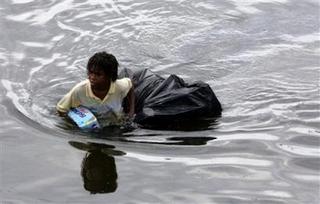Deborah Dickerson wrote an
eye-opening article on “Wedding Crashers” recently in Salon. She loved the movie. Everyone I know who has seen it has loved it so I suppose I’ll have to dismiss my misgivings and check it out.
The thrust of Davis’ article was about non-blacks’ general perception of black female beauty and femininity. Davis was perplexed and saddened that black women are not generally considered pretty or feminine by non-black people.
She wrote of a conversation she overheard when an angry young woman was complaining to her friend that she could not believe her boyfriend had left her for a woman with “black girl” hair..
As a young woman in an integrated world, it is extremely difficult to learn that you are not pretty by definition. There is no amount of weight you can lose that will straighten your hair or lighten your skin.
And not too long ago, the overwhelmingly dominant images of beauty were all achingly light-skinned, straight-haired and utterly unattainable. Even in black media, the models were light-skinned with “good” hair. The girls who got boys’ attention at school were also light-skinned with “good” hair. There was no room for dark skin and hair that “went back” after it got wet in the pantheon of beauty. In arguments, black kids would yell at each other: “You pitch-black, tar, period, dot-black. Smile so I can see you.” “Black is beautiful” had its day, but that day had passed by the mid-80’s, early 90’s.
Then there was the question of hair. A beautician can put a mix of chemicals on your head to get your kinky hair ice-skating straight, but the kinkier the hair, the longer you have to leave it on. The longer you leave it on, the more it burns. My hair was particularly resistant to straightening and after a perm, I would be left with scabs on my scalp. The quest for straight hair literally battered me.
Scalp burns aside, I have lived quite comfortably in the invisible netherworld of an individual whose sexuality is so overlooked that she is treated as gender-neutral. Before college, I never harbored any illusions that I might be pretty and very few non-black or black males made me suspect anything different. My hair was not long. My skin was not light and none of my curves were particularly eye-catching. I didn’t think I would scare small children, but I also wasn’t chasing a modeling career. I adjusted my expectations and made very good friendships with non-black men (I didn’t live around a lot of black males and there weren’t any in my classes, so withhold your judgmental vitriol). The arrangement made being smart and a bit of tomboy easy. Even as an adult, I am always confused and taken aback when a white man indicates that he finds me attractive or desirable. It is always unexpected and jarring because it disturbs my paradigm.
Recently I was trying to explain to a group of black teens how my mother and grandmother cried when black women, Vanessa Williams and Suzette Charles, were named Miss America and first runner up in 1983. In a time before Ashanti and Beyonce, even before Whitney Houston dropped her first album in 1985, two black women were chosen as America’s ideal combination of beauty, talent and intellect. It was incredibly moving.
Twelve years after Williams’ and Charles’ triumph, I was at a party in NYC where I was the only black woman. A young white guy with whom I had been chatting invited me back to his house – that night. I was appalled. Do people really--? Can’t he see that I’m --? “Uh, no. No thanks,” I responded politely, “I have a boyfriend.” AWKWARD! At another party, a blond blue-eyed investment banker was perfectly charming and respectful during what I perceived as an innocent conversation until he said, “You know, well, I’m open-minded.” I paused, confused for a second. Then it dawned on me. Open-minded? Open-minded? Really now? To accommodate my three heads, gills and six rows of teeth you have to be open-minded? Open-minded. I am still fired up thinking about it. He should be so lucky.
Like Gypsy Rose Lee, who morphed from the formerly plain Louise in the musical “Gypsy”, I have emerged from near-invisibility to believe that “I’m a pretty girl, mama. I’m a pretty girl.” And the sooner Hollywood realizes that beauty comes in many shades and textures the sooner things will be coming up roses for all of us.





